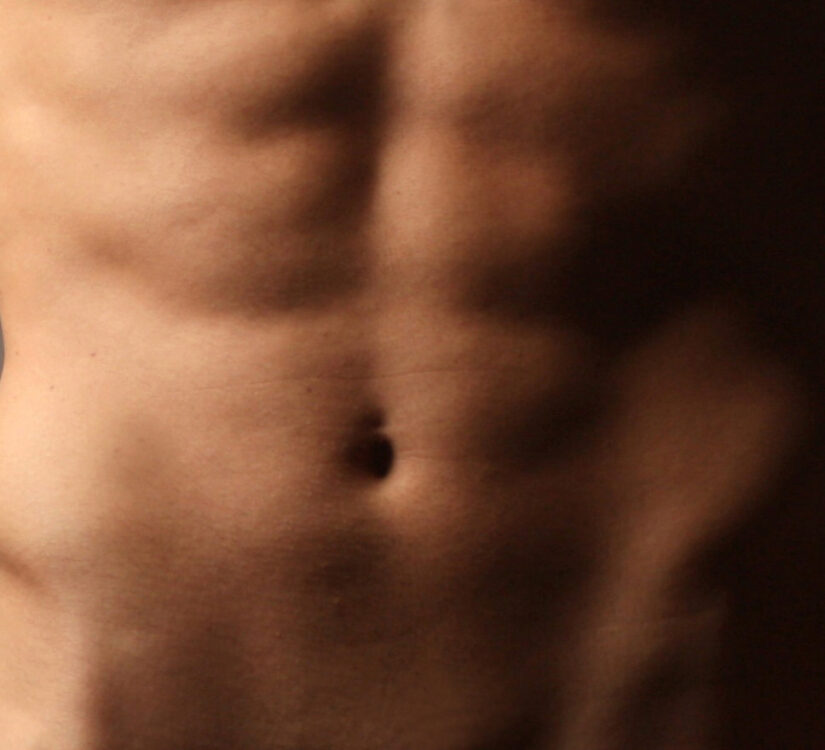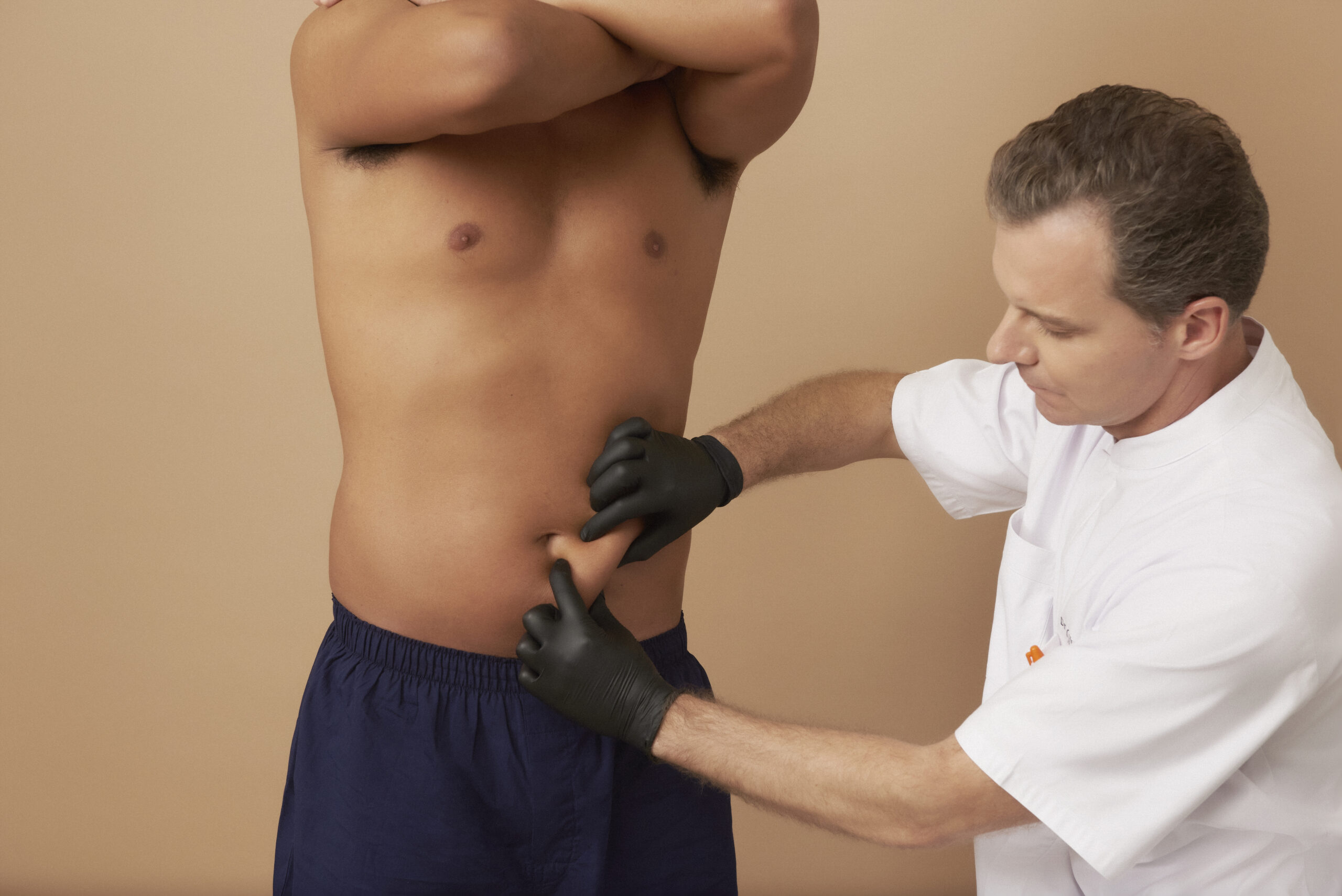
Abdominoplasty
Weight changes, pregnancy and ageing are the three main factors that can have a negative impact on the aesthetic appearance of the abdomen.
There are several abdominoplasty techniques, the choice of which will depend on each patient’s anatomy and expectations. Dr Olivier CLAUDE will explain the various options to you during your consultation.
Presentation
In most cases, a tummy tuck with transposition of the umbilicus is performed to treat the lower abdominal apron and re-tension the abdominal skin above the navel. The navel is repositioned in its anatomical position at the end of the operation.
What are the indications for abdominoplasty with transposition of the umbilicus?
Abdominoplasty is indicated for patients:
- With a lower abdominal apron that more or less covers the pubis.
- Who have loose skin above the umbilicus.
- Who have understood the limits of the operation.
Procedure
What happens during an abdominoplasty consultation?
During the consultation, Dr Olivier CLAUDE begins by taking stock of your medical and surgical history (abdominal hernias, bariatric surgery: by-pass, sleeve gastrectomy, gastric ring), your gynaecological history (number of pregnancies), your weight and height, and your smoking habits.
Dr Olivier CLAUDE always takes the time to listen to you in order to understand your discomfort and your expectations regarding your tummy. He then carries out a clinical abdominal examination in order to assess your excess skin as well as your rectus abdominis muscles (“the abs”).
The latter can pull apart, particularly after pregnancy, leading to a weakening of the abdominal wall, which distends and gives the appearance of a round belly.
The surgeon will also analyse your figure in a more general way (hips, buttocks, saddlebags), in order to suggest the surgical strategy best suited to your anatomy and your needs.
Finally, to help you make your decision more easily, I will inform you about the positioning of the scars, the modalities and limits of the operation, the post-operative course and the main risks.
Pre-operative instructions
Pre-operative instructions common to aesthetic surgery
- Stop smoking 1 month before and after the operation.
- Stop taking bleeding-inducing drugs 10 days before and after the operation: aspirin, anti-inflammatory drugs and anticoagulants.
Pre-operative instructions specific to body contouring surgery
- Be at your ideal weight and stable for at least 6 months.
- Stop taking oral contraceptives 1 month before the operation to reduce the risk of thrombo-embolism (phlebitis and pulmonary embolism).
- Purchase a support garment.
How is the abdominoplasty procedure carried out?
Pre-operative drawings are made before the operation.
The operation is performed under general anaesthetic.
The operation usually begins with liposuction of the abdomen. Then, Dr Olivier CLAUDE will remove all the skin between the navel and the pubis and retract the abdominal skin above the umbilicus, as well as the pubis. The umbilicus is repositioned at the end of the operation.
If there is associated relaxation of the abdominal muscles, these muscles will be re-tensioned in order to tone your abdominal wall and refine your waistline. This procedure is called diastasis cure of the rectus abdominis muscles.
The skin is closed with absorbable subcutaneous sutures. A dressing to shape the abdomen is applied at the end of the operation. Generally, an overnight stay at the clinic is necessary.

Results
What are the results?
The final result of a tummy tuck with transposition of the umbilicus is obtained between 3 and 6 months after the operation, when the post-operative oedema has disappeared.
This result is stable over time, except in cases of significant weight change or pregnancy.
What is the post-operative care?
Abdominoplasty with transposition of the umbilicus is a moderately painful operation in the absence of any action on the abdominal wall muscles.
Pain is well controlled by painkillers. Bruising is common and persists for 2 to 3 weeks after the operation. Oedema (swelling) is constant and of variable duration, waning in a few months. Daily nursing care after your shower with a mild soap is necessary for 15 days.
Three preventive measures against phlebitis are taken after the operation: getting up and walking, wearing compression stockings and daily injections of an anticoagulant (blood thinner) for 15 days. Wearing a support garment is recommended for 4 to 6 weeks to reduce post-operative oedema, and to protect the muscle suture when this has been performed.
Resuming activities:
- Daily activities: from the day after the operation, avoiding carrying heavy loads for 4 to 6 weeks.
- Professional: variable (2 to 3 weeks) depending on the surgical procedure performed and the patient’s work.
- Sports: 6 weeks after the operation.
Scars from abdominoplasty with transposition of the umbilicus
During the operation, two scars are necessary:
- A low scar hidden in the underwear, located above the pubis and extending laterally to the flanks.
- A scar around the umbilicus.
These scars are initially inflammatory (red and swollen) for the first few months, then will gradually fade without disappearing. The final appearance of your scars cannot be predicted and will only be known once the scar has matured (between 1 and 2 years after the operation).
However, I use the best surgical technique to ensure that you have a beautiful scar, namely laser technology, which has been proven to optimise scarring results.
Limitations of abdominoplasty surgery
Abdominoplasty with transposition of the umbilicus does not treat abdominal plumpness if this is due to excess intra-abdominal fat (around the viscera) linked to excess weight. Abdominoplasty with transposition of the umbilicus does not treat stretch marks above the navel.
Abdominoplasty or tummy tuck with transposition of the umbilicus has no effect on the fat rolls located in the upper and lateral part of the abdomen (under the breasts). These will require an upper body lift.
What are the risks of abdominoplasty?
The complications of abdominoplasty with transposition of the umbilicus are few, but they should be mentioned:
In the first few hours after surgery:
- A haematoma (localised accumulation of blood), a rare complication that may require repeat surgery to drain it.
In the month following surgery:
- Healing problems, resulting in localised disunions (opening of the scar) requiring directed healing.
- A seroma (collection of lymph), which may need to be drained in consultation.
- Transient skin sensitivity problems.
- Infection, skin necrosis: rare complications.
- Phlebitis, pulmonary embolism: exceptional complications with the preventive measures taken previously.
Long-term complications:
- Scar enlargement, which may require a new scar.
- Pathological scarring (hypertrophic scars or keloids).


